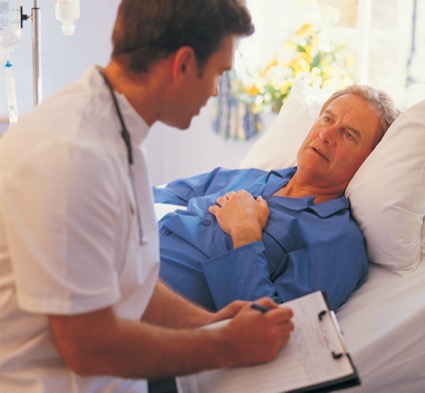Will open notes be a burden or blessing? Physicians may have concerns prior to sharing their notes with patients, but most find the practice to be beneficial after the fact, a recent survey has found.
On April 5, a provision in the 21st Century Cures Act took effect, mandating that physicians share with patients eight types of clinical notes. They include notes from consultations, history and physical examinations, progress and procedure notes, and laboratory and pathology report narratives.
The consequences of that change remain to be seen, but the new survey indicated that at least for clinicians, the result might be far more benign than many imagine.
The survey looked at the effect of a change to open notes at Kaiser Permanente, which began sharing notes with patients in late 2014. At the time, many doctors believed the new policy would lead to longer office visits and more time spent documenting, said James Ralston, MD, MPH, an internal medicine physician and senior investigator at Kaiser Permanente Washington Health Research Institute in Seattle, and first author of the study. Physicians also thought viewing the notes might confuse or worry patients. Instead, after implementing open notes, physician attitudes dramatically changed. “Providers reported much less impact on their practice than they anticipated,” Dr. Ralston said.
The findings were published in the Journal of General Internal Medicine, a few weeks after federal rules requiring note sharing came into effect (2021 Apr 22).
Dr. Ralston and his team surveyed 192 physicians (119 primary care physicians, 47 specialists and 27 surgical specialists) on their opinions about open notes. Whereas 29% of physicians agreed that open notes were beneficial prior to implementation, that percentage rose significantly to 71% (P<0.001) after sharing notes with patients. Fewer clinicians expressed concerns about how open notes might prolong office visits (47% pre-implementation to 15% after), lead to more time spent documenting (57% to 28%), and add to time spent answering patient questions outside of visits (71% to 16%).
The results were “remarkably concordant” across all surveyed physicians, regardless of specialty, Dr. Ralston said.
Although some hesitation is understandable for physicians, the move toward transparency in medicine is a positive step forward in building a more collaborative relationship between physicians and patients, said Simon Mathews, MD, an assistant professor of medicine in the Division of Gastroenterology and Hepatology at Johns Hopkins Medicine, in Baltimore. Open notes also brings health care closer in line with other industries, in which consumer information—from bank accounts to online orders—is easily accessible. “The fact that something as important as medical information is hard to access or different to find, for me, just doesn’t make sense,” Dr. Mathews said.
Jeannie Huang, MD, MPH, a pediatric gastroenterologist at Rady Children’s Hospital, in San Diego, agreed that transparency is the ultimate goal. She also has found note sharing to be beneficial to her practice and resulted in “a bit of efficiency” when communicating with patients outside of the office. “Families who read the note tend to not call me as much, or when they do call me, we don’t have to rehash the entire visit because we are on the same page,” Dr. Huang told Gastroenterology & Endoscopy News.
Despite the positive attitudes, fewer providers reported that patient satisfaction and safety improved with open notes. The percentage of providers who thought that sharing notes would improve patient satisfaction and patient safety fell from 40% to 17% and 33% to 11%, respectively, before and after implementation.
“These changes further reflect the less-than-anticipated impact of open notes on practice,” the authors wrote, adding that open notes might need to be combined with additional care management interventions to “realize the potential to improve patient safety, quality and experience of care.”
Concerns also remained that sharing notes could pose problems for patients. Nearly six in 10 providers (57%) surveyed said viewing notes was more confusing than helpful to patients, and 65% thought it caused patients to worry more. The percentages were even higher (66% and 77%, respectively) for medical specialists. For gastroenterology, with its wide variety of patient encounters—like clinic visits, procedures and pathology—“some of that information can be quite technical and complicated” and might be unfamiliar to patients, Dr. Mathews said.
In some cases, patients may be able to see test results before a clinician, which could cause unnecessary panic and lead them to seek medical information on less reliable online sources, Dr. Mathews added.
However, fears about patient confusion and worry may be unfounded, said Dr. Ralston, who added that patients rarely reported feeling confused or worried from reading their medical notes in previous research.
Both Drs. Huang and Mathews agreed that the advantages of note sharing far outweigh the disadvantages. “I understand that there is a lot of angst out there, but I think people over time will find it’s a greater benefit than they realize now,” Dr. Huang said.
—Lucy Hicks
Note: Rady Children’s Hospital was misspelled in an earlier version of this story. Gastroenterology & Endoscopy News apologizes for the error.
This article is from the June 2021 print issue.


